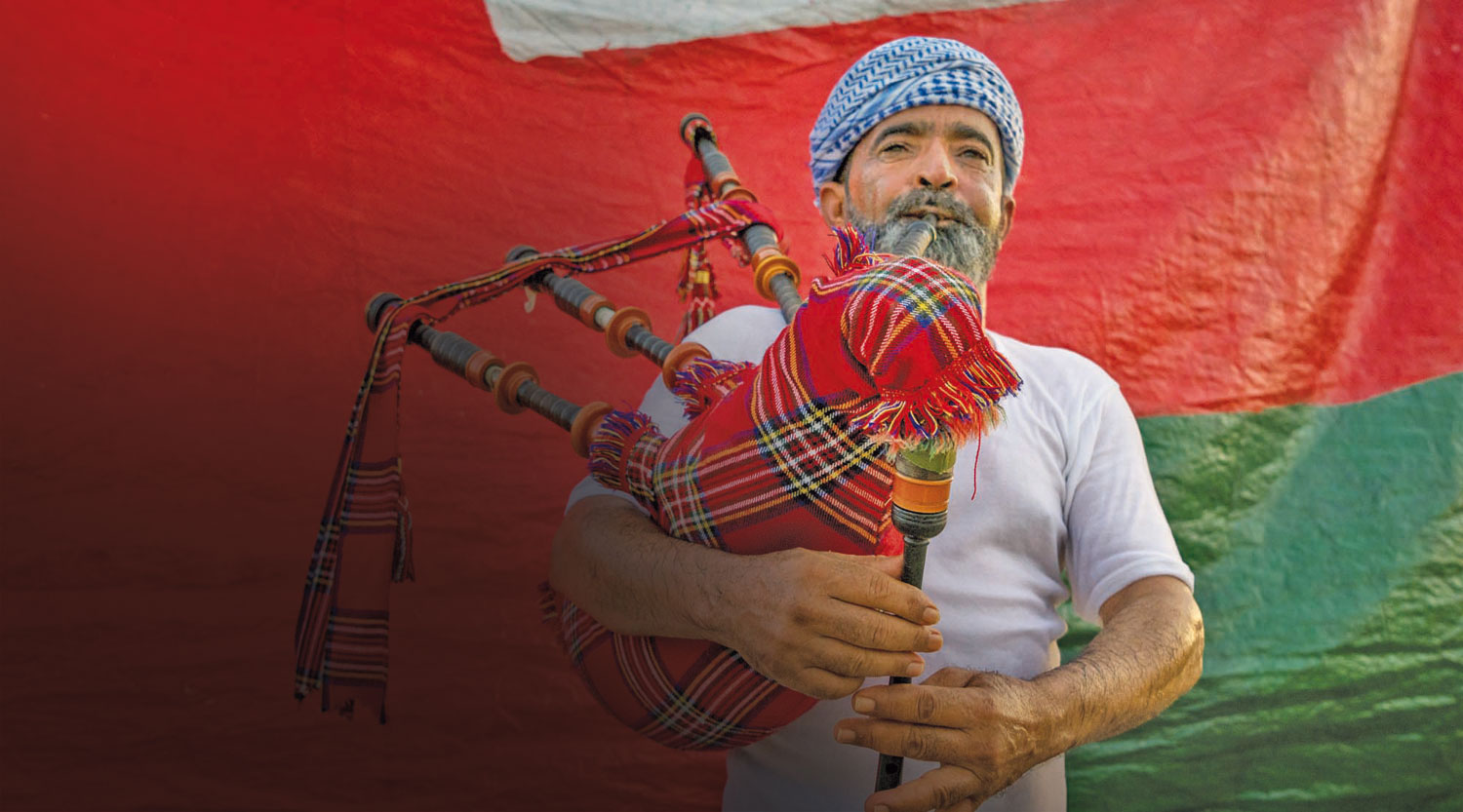

Musicians and instruments, with time, change and this has been the case in the Sultanate today. But there are a few things that remained constant in the Sultanate’s musical journey, primary of this is its close and undying connection to its roots and tradition.
The role of traditional music has transformed and continue to transform the country in the last four decades and this is important as folklore and other art forms can influence transformation to a great extent.
Many of the art forms in the country were influenced by its close relation with the sea and as Omani sailors’ since time immemorial has been travelling across the continent, has paved the way for rich, authentic tales that to this day has influenced the lives of tis people.
Traditional music, which emphasises on rhythm, has withstood the test of time. At the same time, musical instruments have undergone changes in their look and appearance.
Popular Omani music is diverse and reflects the present times. In an age when things are changing rapidly, new styles of music are evolving. Despite these changes, and although it can be argued that traditional music has adapted different styles for fine tuning, it cannot be ignored that it has remained rooted to its origin.
“Oman’s traditional music and art forms have managed to defy all attempts to cause changes to it. The changing times and the digital age have had an impact on their appearance and output, but it has always remained rooted to tradition,” says Nasser al Sawafi, Director of Intangible Heritage Culture, Ministry of Heritage and Culture.
Music in Oman has been strongly influenced by its coastal location and a relatively recent Portuguese presence, while geographic neighbours such as the United Arab Emirates, Yemen, Saudi Arabia and Iran have had a profound influence.
In contrast to other Arab countries, Oman’s music genres are born from all spheres of Omani life and they are sung at festive occasions such as births, circumcision, marriage, religious celebrations, national festivals, children’s games, etc.
Historically, music has played an important part in all activities related to the sea such as casting/ hauling of nets, hoisting/ lowering of sails and coming home triumphant after a day’s catch.
Authentic Arabic music in Oman can be characterised by ‘tetrachords’ with classic Arabic intervals, including three-quarter tones taken from the Arabic musical scales — the ‘maqamat’.

Different regions have its regional and communal music forms on a variety of occasions. For example, the traditional dance form of Liwa traces its origin to Africa and is performed in Eastern Arabia among descendants of the people from Swahili coast, which include Tanzania and Zanzibar.
It is also performed by the African-descent Sheedi community, besides the Baloch community in Pakistan’s Makran coast and Karachi area.
“Unlike in most Arab countries, all Omanis, including men and women, and the young and the old, participate in music and celebrations,” said Abdulaziz bin Nasser bin Said al Balushi, Head of Music and Folklore at the Ministry of Heritage and Culture.
Traditional songs originating from the desert are often in praise of the camel, which has been described in the holy Quran. Al Taghrud, sung while riding camels, and Al Taariq, a Bedouin song with two singers taking turns to sing verses, are two of the best examples of traditional desert songs.
Razha, a dance characterised by sword and poetry exchange, is another way of expression for the Omani population at various occasions.
Acclaimed singers such as Sham Maskari and Salim Rashid al Suri, who have combined strains of the sounds of the northern Arabian Gulf and other musical traditions of the Indian Ocean as pioneers of the genre called Sawt Al Khaleej (Voice of the Gulf), have had exponential influence on Oman music.
“Our unique nature has given us an assortment of traditional marine and mountain arts, including Al Nabdah, Al Dan, Al Razeef, Al Ramasiya, Al Azi, Al Sahba and al Rawah,” says Al Sawafi.
According to him, although the inhabitants of Musandam Governorate call a lot of art forms with names that are common in other regions of the country, Musandam is known for its “unique performance”.
“Al Rawah is considered one of the original art forms of people of Musandam that has been kept alive till today.”
Saif Subeit al Mamary, a poet, says popular art forms are the best way of expressing culture and they originate from the local environment.
Al Razfa, for instance, is one of the most popular art forms performed at wars in history, national events in modern times, social gatherings such as weddings, and when leaders from other countries visit Oman.
Oman’s percussion instruments such as kasir and rahmani are essential elements of traditional music. Other instruments such as tambourine (duff) and khulkhal, an anklet, mirror Omani culture and tradition.
Kabeer yousuf
Oman Observer is now on the WhatsApp channel. Click here



